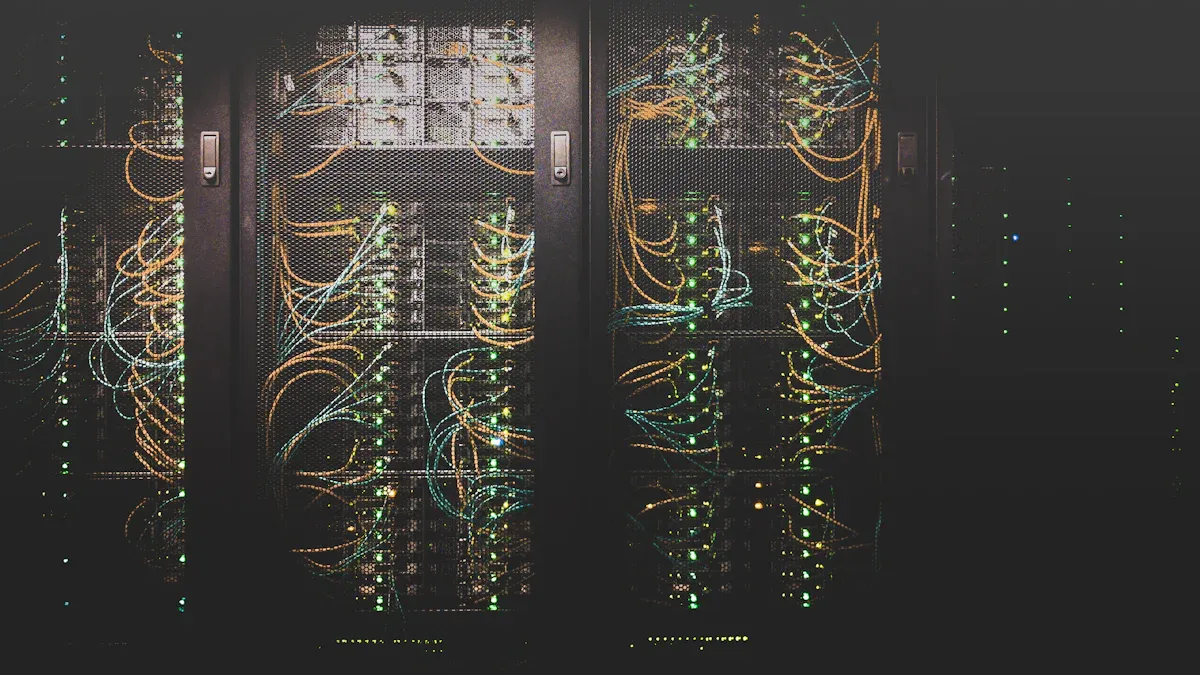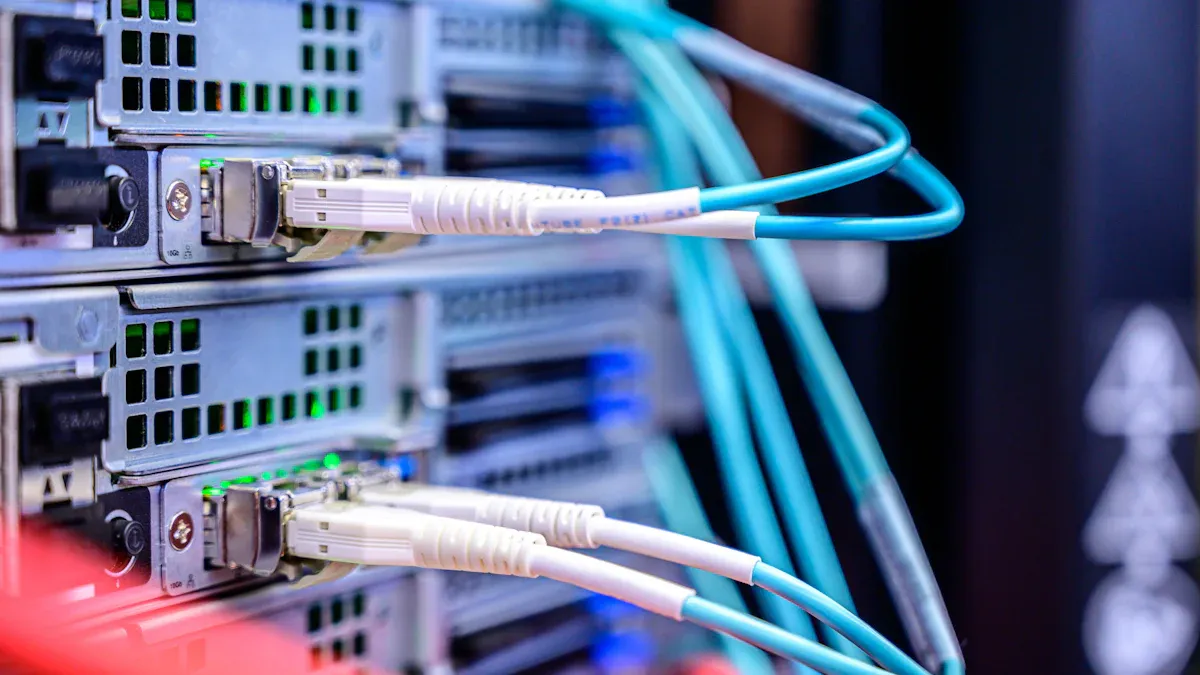
A Protocol Data Unit, or PDU, represents a specific unit of data exchanged across a network layer. It helps organize and manage information as devices communicate. Understanding the PDU allows network professionals to identify how data moves efficiently and securely between systems.
Key Takeaways
- PDUs organize data at each network layer by adding control information, helping devices communicate clearly and reliably.
- Each network layer uses a specific PDU type like segment, packet, or frame to manage data efficiently and securely.
- Understanding PDUs improves troubleshooting, boosts network performance, and strengthens security by detecting errors and preventing attacks.
PDU Definition and Core Function
What Is a PDU?
A Protocol Data Unit, often abbreviated as PDU, serves as a fundamental building block in network communication. According to RFC 1208, a PDU represents a data object exchanged between protocol entities within a specific layer of a network model. This data object includes both Protocol Control Information (PCI) and user data. The PCI contains essential details such as addressing, sequencing, and error-checking codes, while the user data carries the actual information being transmitted. In both academic and industry literature, experts recognize this definition as the standard because it highlights the dual structure and critical role of PDUs in managing network traffic.
PDUs facilitate communication between different layers of the OSI and TCP/IP models. Each layer processes, encapsulates, or decapsulates these units by adding or interpreting headers and footers relevant to its function. For example, the Transport Layer uses a segment as its PDU, dividing data into manageable pieces. The Network Layer uses a packet, which includes routing and addressing information. This process allows each layer to communicate with its peer on another device, ensuring that data moves smoothly up and down the stack. By modularizing communication, PDUs support interoperability, data integrity, and efficient session management.
Note: PDUs act as the universal language for network devices, enabling seamless data exchange across diverse systems and technologies.
Core Function of a PDU
The core function of a PDU centers on organizing and managing data transmission across network layers. Each PDU encapsulates both control information and user data, ensuring that every layer can process the information it receives without needing to understand the details of other layers. This modular approach allows for independent operation and simplifies troubleshooting.
- PDUs structure data exchanged between network entities, encapsulating control information and user data.
- Each OSI model layer uses a specific PDU type, such as segment, packet, or frame, to encapsulate data appropriately.
- The two-part structure of PDUs—header and payload—enables the inclusion of source and destination addresses, error-checking codes, and sequencing information.
- PDUs provide encapsulation, modularity, and interoperability, allowing different devices and protocols to communicate effectively.
- They manage routing, error detection, and flow control by adding layer-specific control information.
- PDUs ensure reliable and organized data transmission, structuring information for efficient handling across network layers.
Network devices such as routers, switches, and firewalls rely on PDUs to perform their functions. Routers use addressing information in PDU headers to forward packets efficiently. Switches and firewalls inspect PDUs to maintain security and performance. Error-checking mechanisms, like cyclic redundancy check (CRC) in data link layer PDUs, detect transmission errors. Protocols such as TCP use sequence and acknowledgment numbers within PDUs to guarantee ordered and complete delivery. The modular structure of PDUs supports flexibility, scalability, and reliability in complex enterprise networks.
PDU Structure, Types, and Layer Roles

Structure and Components of a PDU
A Protocol Data Unit consists of two main parts: the payload and control information. The payload carries the actual data from the user or application. Control information, found in headers and sometimes trailers, includes details such as addresses, sequencing, and error-checking codes. Each network layer adds its own control information to the PDU, supporting functions like routing, error detection, and flow control. For example, the data link layer adds error detection codes, while the network layer includes source and destination IP addresses. The table below summarizes the standard components of PDUs at various layers:
| Network Layer | PDU Name | Components / Description |
|---|---|---|
| Transport Layer | Segment / Datagram | Port numbers, error checking, original data |
| Network Layer | Packet | Network addressing, routing information |
| Data Link Layer | Frame | Physical addressing, error detection, organizes bits into frames |
| Physical Layer | Bits / Signals | Raw transmission of bits |
PDU Types at OSI and TCP/IP Layers
The OSI and TCP/IP models use different names for PDUs at each layer. In the OSI model, the application, presentation, and session layers use “data” as the PDU. The transport layer uses “segment,” the network layer uses “packet,” the data link layer uses “frame,” and the physical layer uses “bit.” The TCP/IP model combines some layers but follows similar naming conventions. Each layer encapsulates the PDU from the layer above, adding headers or trailers for specific functions.
Examples of PDUs: Frame, Packet, Segment
A segment at the transport layer contains source and destination port numbers and sequence numbers. This structure ensures reliable delivery and correct ordering. At the network layer, a packet includes the segment plus IP addresses for routing across networks. The data link layer wraps the packet in a frame, adding MAC addresses and error detection codes. For example, during a Skype file transfer, application data becomes a segment, then a packet, and finally a frame before transmission. Each PDU type serves a unique role in moving data efficiently and securely through the network.
PDU Importance in Networking

Why PDUs Matter: Encapsulation and Interoperability
Encapsulation stands at the core of network communication. Each layer in the OSI or TCP/IP model adds its own header or trailer to the data, forming a new Protocol Data Unit. This process allows each layer to communicate with its counterpart on another device. For example, the transport layer adds port and sequencing information, while the network layer adds logical addressing. The data link layer then includes hardware addresses and error-checking codes. This layered approach hides the details of lower layers and enables modular communication. Devices from different vendors can exchange information because PDUs follow standardized formats. Semantic interoperability ensures that systems not only exchange data but also interpret its meaning correctly, even when data structures differ. This standardization supports seamless communication in multi-vendor environments.
PDU Impact on Network Performance and Security
PDUs directly affect network performance metrics such as latency and throughput. The size and number of PDUs influence how quickly data moves across the network. Protocols like TCP and UDP handle PDUs differently, impacting both speed and reliability. TCP ensures delivery but may increase latency due to sequencing and acknowledgments. UDP reduces latency but may compromise reliability. Improper handling of PDUs can introduce security vulnerabilities. Attackers may exploit weaknesses by sending forged control messages, causing packet drops or session hijacking. These attacks often result from implicit trust between protocol layers and insufficient validation. Strengthening validation and access controls at each layer helps prevent unauthorized manipulation of PDUs.
PDUs in Troubleshooting and Protocol Efficiency
Network professionals rely on PDUs for troubleshooting. Packet sniffers and analyzers capture and decode PDUs, allowing experts to inspect headers and payloads for errors. Common scenarios include diagnosing routing issues, detecting data corruption, and identifying packet loss. Efficient PDUs help maintain data integrity and reduce unnecessary retransmissions, which is vital in large-scale networks. By standardizing structure and including error detection, PDUs support reliable communication and minimize network congestion. This efficiency ensures smooth operation and quick resolution of network problems.
- A Protocol Data Unit organizes data for each OSI layer.
- Each layer uses a unique type, such as frame or segment.
- Headers and trailers enable reliable communication.
- Encapsulation supports modular network design.
- PDUs help troubleshoot and maintain data integrity.
Network professionals gain efficiency and accuracy by mastering these concepts.
FAQ
What is the main difference between a packet and a frame?
A packet operates at the network layer. A frame works at the data link layer. Each serves a unique role in data transmission.
How do PDUs help with network troubleshooting?
Network engineers analyze PDUs using tools like Wireshark. They inspect headers and payloads to identify errors, packet loss, or routing issues.
Can PDUs affect network security?
Yes. Attackers may exploit PDU vulnerabilities. Proper validation and security controls at each layer help protect network data.
Post time: Aug-06-2025

